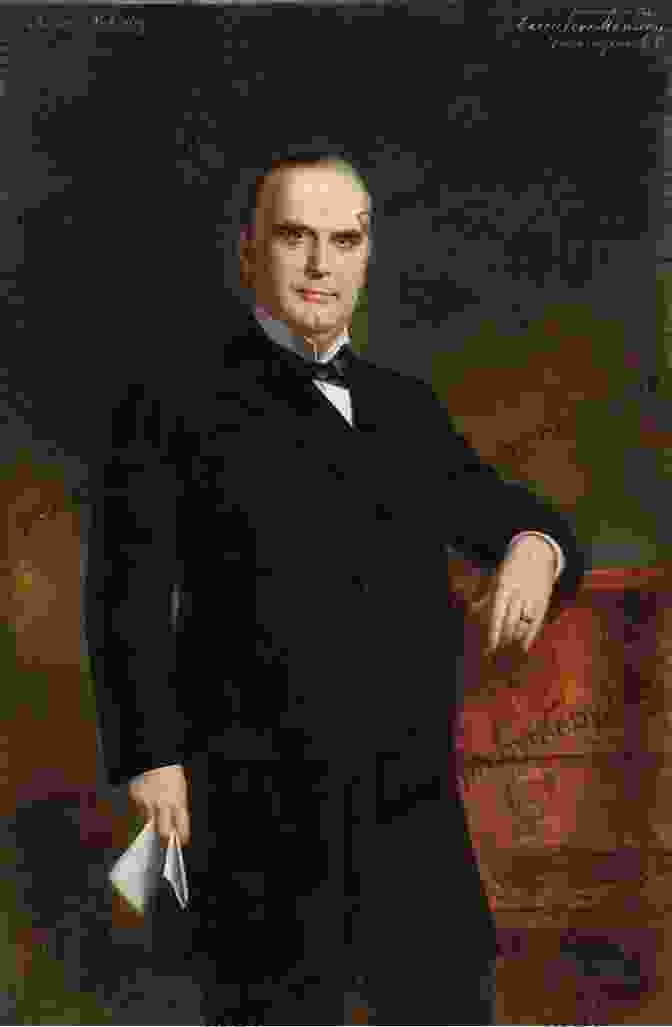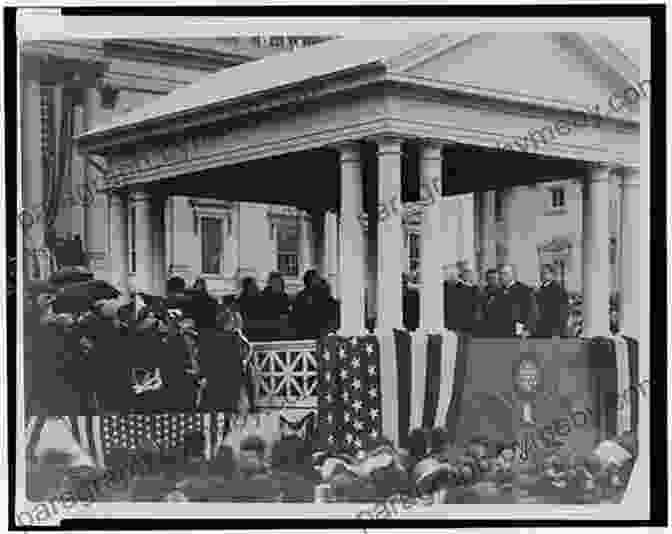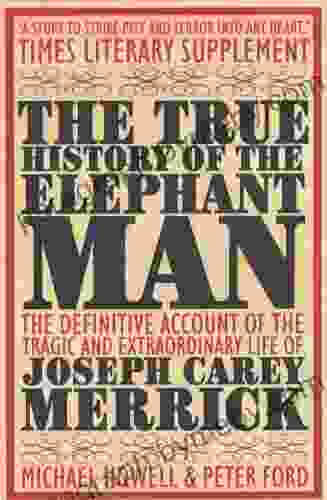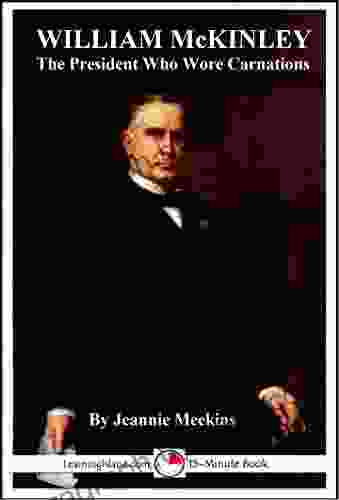The President Who Wore Carnations: Unraveling the Enigma of William McKinley

5 out of 5
| Language | : | English |
| File size | : | 1376 KB |
| Text-to-Speech | : | Enabled |
| Enhanced typesetting | : | Enabled |
| Word Wise | : | Enabled |
| Print length | : | 31 pages |
| Lending | : | Enabled |
| Screen Reader | : | Supported |
A Flower's Tale: The Symbolism of Carnations

In the annals of American history, President William McKinley stands as a figure of both admiration and mystery. His enigmatic persona was symbolized by an unusual accessory – the carnation.
The carnation, with its vibrant petals and sweet fragrance, became an inseparable part of McKinley's image. He wore it on his lapel, carried it in his hand, and even had it decorate the White House. This peculiar sartorial choice ignited curiosity and speculation, adding to the allure of the 25th President of the United States.
Some believed the carnation represented McKinley's Midwestern roots and his humble beginnings in Niles, Ohio. Others saw it as a symbol of his deep faith and the Victorian sentimentality that permeated his era. Yet, the true meaning behind his floral affinity remains an enigmatic puzzle.
The Man Behind the Flower: William McKinley
To understand the significance of McKinley's carnations, one must delve into the complexities of the man who wore them. Born in 1843, McKinley's early life was marked by the hardships of the Civil War, where he served with distinction in the Union Army.
After the war, McKinley entered politics and rose through the ranks, serving as governor of Ohio before being elected president in 1896. His presidency was characterized by prosperity and expansion, including the acquisition of Hawaii and the Spanish-American War.
McKinley's personal qualities were as captivating as his political achievements. He was known for his amiable demeanor, impeccable attire, and strong work ethic. His signature carnation became a visual embodiment of his charm and gentility.
Carnations at the Crossroads of Character and Presidency

While the symbolism of McKinley's carnations remains ambiguous, their presence undoubtedly influenced both his public image and his presidency.
The carnation's association with gentleness and compassion softened McKinley's stern demeanor, making him appear more approachable and relatable to the American people. This perception played a crucial role in his successful re-election in 1900.
Furthermore, the carnation's popularity in Victorian America aligned with the patriotic fervor that marked McKinley's presidency. The flower became a symbol of American pride and optimism, reinforcing McKinley's message of national unity and progress.
The Legacy of a Floral Symbol
On September 6, 1901, President McKinley was assassinated while attending the Pan-American Exposition in Buffalo, New York. His untimely death sent shockwaves through the nation, and his beloved carnations became a poignant symbol of his legacy.
In the years that followed, William McKinley's carnations became an enduring reminder of his character, his presidency, and the enduring power of symbolism. His enigmatic floral accessory remains a topic of fascination, inspiring historians, biographers, and the American public alike.
The President Who Wore Carnations is a captivating exploration of William McKinley's life, motivations, and the profound impact he left on American history. Through the lens of his signature flower, we glimpse a multifaceted figure whose personal qualities and political achievements continue to intrigue and inspire.
Whether seen as a symbol of his Midwestern roots, his Victorian sensibilities, or his gentle nature, McKinley's carnations stand as a testament to the enduring power of symbolism and the enigmatic legacy of the 25th President of the United States.
5 out of 5
| Language | : | English |
| File size | : | 1376 KB |
| Text-to-Speech | : | Enabled |
| Enhanced typesetting | : | Enabled |
| Word Wise | : | Enabled |
| Print length | : | 31 pages |
| Lending | : | Enabled |
| Screen Reader | : | Supported |
Do you want to contribute by writing guest posts on this blog?
Please contact us and send us a resume of previous articles that you have written.
 Book
Book Novel
Novel Page
Page Chapter
Chapter Text
Text Story
Story Genre
Genre Reader
Reader Library
Library Paperback
Paperback E-book
E-book Magazine
Magazine Newspaper
Newspaper Paragraph
Paragraph Sentence
Sentence Bookmark
Bookmark Shelf
Shelf Glossary
Glossary Bibliography
Bibliography Foreword
Foreword Preface
Preface Synopsis
Synopsis Annotation
Annotation Footnote
Footnote Manuscript
Manuscript Scroll
Scroll Codex
Codex Tome
Tome Bestseller
Bestseller Classics
Classics Library card
Library card Narrative
Narrative Biography
Biography Autobiography
Autobiography Memoir
Memoir Reference
Reference Encyclopedia
Encyclopedia Willow Rose
Willow Rose Sandra A Krasovec
Sandra A Krasovec Jean Rose
Jean Rose John Conroy
John Conroy Jeff Wallach
Jeff Wallach Roy R Neuberger
Roy R Neuberger Sunny Seki
Sunny Seki Tiago Ribeiro Dos Santos
Tiago Ribeiro Dos Santos Jill Stamm
Jill Stamm Jennifer Jewell
Jennifer Jewell Jessica Mack
Jessica Mack Jennifer Grouling Cover
Jennifer Grouling Cover Jeffrey Vonk
Jeffrey Vonk Jean Little
Jean Little Rob Stewart
Rob Stewart Jen Castleberry
Jen Castleberry Jeremy J Baumberg
Jeremy J Baumberg Jean M Twenge
Jean M Twenge Jeffrey Ebbeler
Jeffrey Ebbeler Jeff Tunkey
Jeff Tunkey
Light bulbAdvertise smarter! Our strategic ad space ensures maximum exposure. Reserve your spot today!

 Geoffrey BlairThe Kidnapping of Jessica Buchanan and Her Dramatic Rescue by SEAL Team Six
Geoffrey BlairThe Kidnapping of Jessica Buchanan and Her Dramatic Rescue by SEAL Team Six
 Italo CalvinoThe Greatest Zombie Movie Ever: A Comprehensive Guide to the Ultimate Undead...
Italo CalvinoThe Greatest Zombie Movie Ever: A Comprehensive Guide to the Ultimate Undead...
 Colin FosterJohn Henry Twachtman: A Master of American Landscape Painting, Captured in...
Colin FosterJohn Henry Twachtman: A Master of American Landscape Painting, Captured in...
 Federico García LorcaUnlock the Secrets of Fly Fishing with "Lefty Kreh Presenting The Fly"
Federico García LorcaUnlock the Secrets of Fly Fishing with "Lefty Kreh Presenting The Fly" Stuart BlairFollow ·6.8k
Stuart BlairFollow ·6.8k Marc FosterFollow ·2.1k
Marc FosterFollow ·2.1k Danny SimmonsFollow ·5.6k
Danny SimmonsFollow ·5.6k Shannon SimmonsFollow ·8.3k
Shannon SimmonsFollow ·8.3k Clarence BrooksFollow ·2.2k
Clarence BrooksFollow ·2.2k Ibrahim BlairFollow ·9k
Ibrahim BlairFollow ·9k Craig BlairFollow ·3.4k
Craig BlairFollow ·3.4k Mark TwainFollow ·3.9k
Mark TwainFollow ·3.9k

 Jeremy Mitchell
Jeremy MitchellUnveiling the Truth: The Captivating Saga of The Elephant...
Embark on a poignant journey through the...

 Marvin Hayes
Marvin HayesThe Day The World Came To Town: A Heartwarming Tale of a...
In the quaint...

 Hugh Bell
Hugh BellExplore the Avian Treasures of Wisconsin: A Review of...
Unveiling the Secrets of...
5 out of 5
| Language | : | English |
| File size | : | 1376 KB |
| Text-to-Speech | : | Enabled |
| Enhanced typesetting | : | Enabled |
| Word Wise | : | Enabled |
| Print length | : | 31 pages |
| Lending | : | Enabled |
| Screen Reader | : | Supported |










